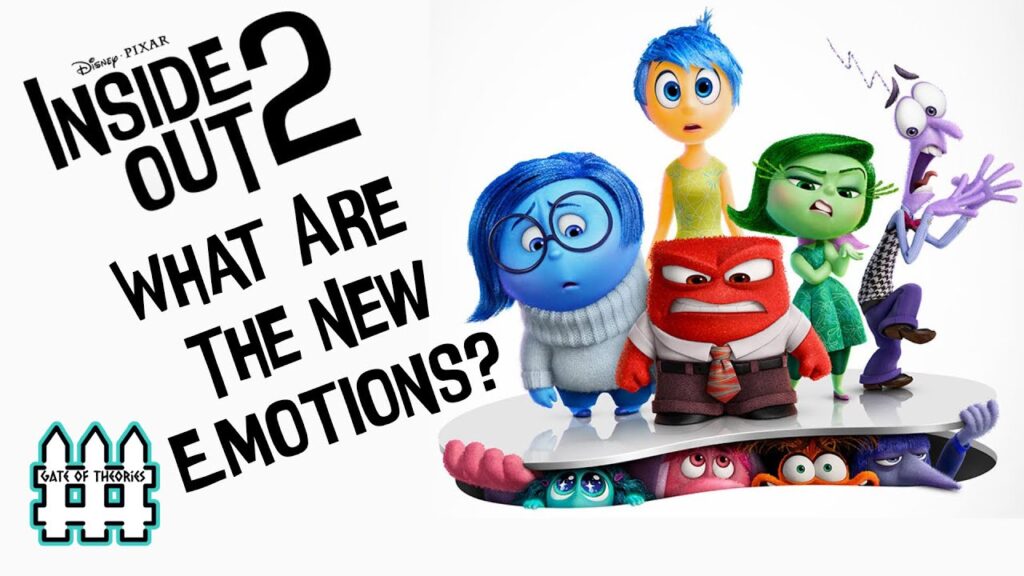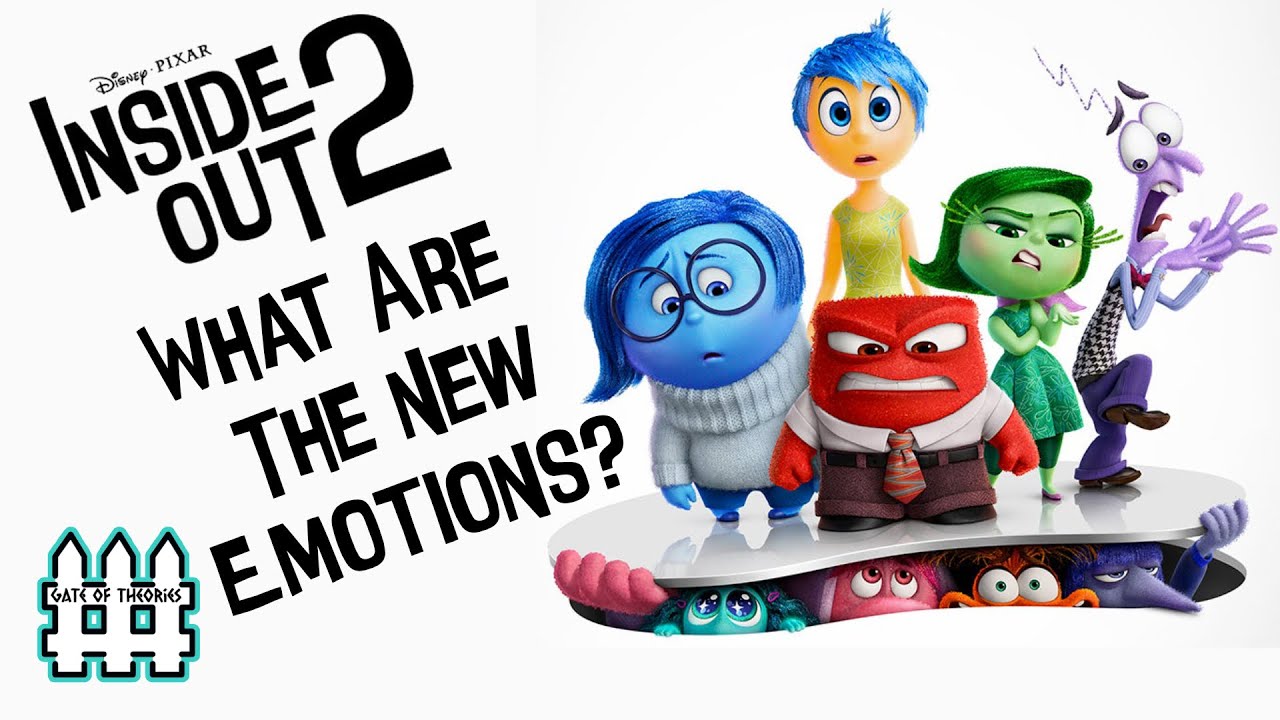
Who Are the Emotions in Inside Out? A Comprehensive Guide
Pixar’s Inside Out captivated audiences worldwide with its innovative portrayal of human emotions. The film centers on Riley Andersen, an 11-year-old girl, and the five personified emotions that reside in her mind’s Headquarters. Understanding who are the emotions in Inside Out is key to appreciating the film’s message about emotional intelligence and the complexity of the human experience. This article delves into each emotion’s personality, role, and significance within the narrative.
Meet the Core Emotions of Inside Out
The five core emotions that control Riley’s actions and reactions are Joy, Sadness, Fear, Disgust, and Anger. Each emotion is visually distinct and plays a crucial role in shaping Riley’s personality and memories.
Joy
Joy, voiced by Amy Poehler, is the primary emotion and the de facto leader of Headquarters. She’s energetic, optimistic, and determined to keep Riley happy. Her goal is to create positive core memories and prevent any negative emotions from taking over. Joy’s bright yellow color and sparkling aura reflect her sunny disposition. She embodies happiness, enthusiasm, and the desire for Riley to experience only the best things in life. However, Joy’s initial inability to understand the importance of sadness forms a critical part of her character arc. She learns that sadness is vital for empathy and connection.
Sadness
Sadness, voiced by Phyllis Smith, is a blue, melancholic emotion who often feels out of place in Headquarters. She’s characterized by her downcast demeanor, slow movements, and tendency to cry. Initially, Joy tries to suppress Sadness, viewing her as a hindrance to Riley’s happiness. However, Sadness ultimately proves to be essential for emotional balance. She helps Riley process difficult experiences, connect with others, and receive comfort when needed. Sadness facilitates empathy and allows Riley to express her vulnerability. Understanding Sadness is crucial for understanding who are the emotions in Inside Out and their importance.
Fear
Fear, voiced by Bill Hader, is a purple, anxious emotion whose primary function is to protect Riley from danger. He’s constantly on alert, assessing potential threats and devising escape plans. Fear is cautious, easily startled, and prone to overthinking. While he can be a bit of a worrywart, Fear’s intentions are always good. He ensures Riley’s safety and well-being, even if his methods sometimes seem excessive. Fear highlights the importance of caution and risk assessment in navigating the world. He reminds us that anxiety, while unpleasant, can be a valuable tool for survival and making informed decisions. He is vital to understanding who are the emotions in Inside Out.
Disgust
Disgust, voiced by Mindy Kaling, is a green, judgmental emotion whose job is to prevent Riley from being poisoned, both physically and socially. She’s sophisticated, picky, and easily repulsed by anything she deems unpleasant or unhealthy. Disgust protects Riley from toxic substances, bad fashion choices, and social awkwardness. She represents the importance of boundaries and self-respect. Disgust helps Riley maintain her standards and avoid situations that could compromise her well-being. Disgust, as one of the key players in who are the emotions in Inside Out, provides a valuable perspective on social navigation.
Anger
Anger, voiced by Lewis Black, is a red, fiery emotion who’s quick to react to injustice and frustration. He’s easily provoked, prone to outbursts, and fiercely protective of Riley’s sense of fairness. Anger ensures that Riley stands up for herself and doesn’t let others take advantage of her. He represents the importance of assertiveness and defending one’s rights. While Anger can sometimes be destructive, he also provides the motivation to challenge unfair situations and fight for what’s right. Seeing Anger as part of who are the emotions in Inside Out showcases a balanced emotional spectrum.
The Role of Emotions in Shaping Riley’s Personality
The emotions in Inside Out are not merely abstract concepts; they are active participants in Riley’s life, influencing her thoughts, feelings, and behaviors. Each emotion contributes to the formation of Riley’s core memories, which in turn shape her personality islands – key aspects of her identity, such as Family, Friendship, Hockey, and Honesty. When Riley moves to San Francisco, her emotions struggle to adapt to the new environment, leading to a crisis that threatens to unravel her personality. The film explores how the interplay between different emotions is crucial for maintaining emotional stability and a sense of self. The understanding of who are the emotions in Inside Out helps understand the complexity of personality development.
Core Memories and Personality Islands
Core memories are the most significant and influential memories in Riley’s life. They are powered by her emotions and form the foundation of her personality islands. Each island represents a core aspect of Riley’s identity and provides her with a sense of belonging and purpose. When Riley’s core memories are disrupted, her personality islands begin to crumble, leading to a loss of her sense of self. This highlights the importance of emotional stability and the need for all emotions to work together in harmony. The interaction of all parts of who are the emotions in Inside Out defines her personality.
The Importance of Emotional Balance
Inside Out emphasizes the importance of emotional balance and the acceptance of all emotions, even the negative ones. Initially, Joy tries to suppress Sadness, believing that Riley should always be happy. However, she eventually learns that sadness is essential for processing difficult experiences and connecting with others. The film shows that all emotions have a valuable role to play in shaping a healthy and well-rounded personality. Suppressing emotions can lead to emotional instability and a loss of authenticity. Learning about who are the emotions in Inside Out helps viewers understand the importance of accepting all feelings.
Beyond the Core Five: Other Emotions and Mental Constructs
While Joy, Sadness, Fear, Disgust, and Anger are the primary emotions featured in Inside Out, the film also hints at the existence of other emotions and mental constructs within Riley’s mind. These include minor emotions, abstract thought, imagination, and the subconscious. These elements add depth and complexity to the film’s portrayal of the human mind. Understanding who are the emotions in Inside Out requires looking beyond the core five.
The Subconscious and Imagination Land
Riley’s subconscious is a vast and mysterious realm where her deepest fears and forgotten memories reside. It’s home to characters like Jangles the Clown, who represents Riley’s childhood fear of clowns. Imagination Land is a whimsical and ever-changing landscape where Riley’s creative thoughts and fantasies come to life. These elements demonstrate the boundless potential of the human mind and the power of imagination. The film also includes other emotional entities that contribute to Riley’s overall emotional landscape, such as minor emotions that appear briefly in Headquarters. These elements deepen the understanding of who are the emotions in Inside Out.
Abstract Thought
The film depicts abstract thought as a process of deconstructing and simplifying complex concepts. As Joy and Sadness venture deeper into Riley’s mind, they encounter abstract thought, which gradually breaks down their physical forms into geometric shapes. This represents the process of simplifying complex ideas into their basic components. Abstract thought is a crucial aspect of cognitive development and allows us to understand the world in new and creative ways. The depiction of abstract thought adds another layer of intellectual depth to Inside Out.
The Enduring Appeal of Inside Out
Inside Out resonates with audiences of all ages because it tackles universal themes of emotional intelligence, personal growth, and the importance of self-acceptance. The film’s innovative portrayal of emotions as distinct characters makes complex psychological concepts accessible and engaging. By exploring the inner workings of Riley’s mind, Inside Out encourages viewers to reflect on their own emotional experiences and develop a greater understanding of themselves and others. The film is praised for its originality, creativity, and its ability to spark meaningful conversations about mental health and emotional well-being. The film’s exploration of who are the emotions in Inside Out continues to fascinate and educate audiences worldwide.
Conclusion: Embracing the Full Spectrum of Emotions
In conclusion, who are the emotions in Inside Out are Joy, Sadness, Fear, Disgust, and Anger. Each emotion plays a vital role in shaping Riley’s personality and guiding her through life’s challenges. The film teaches us that all emotions are important, even the negative ones, and that emotional balance is essential for a healthy and fulfilling life. Inside Out is a powerful reminder that embracing the full spectrum of emotions is key to understanding ourselves and connecting with others. The film’s enduring message continues to resonate with audiences, making it a timeless classic in the world of animated cinema.
[See also: The Psychology Behind Inside Out’s Emotions]
[See also: How Inside Out Changed the Way We Talk About Feelings]

